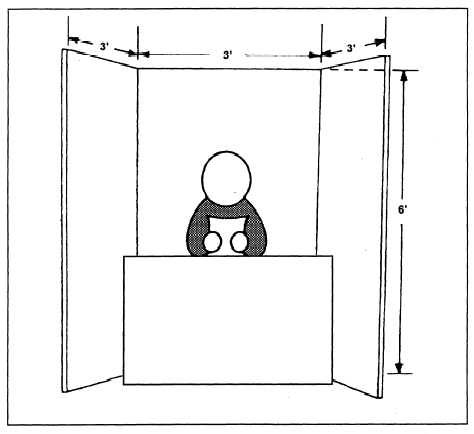Figure 14-31.—Basic television set.
BARN DOORS.— Barn doors are metal flaps
attached to a ring that is connected to the body of the
lighting instrument. They come in either two- or
four-door versions. Depending on the type of barn door,
you can open or close the doors at the top, bottom or
sides to crop the light.
SCREENS.— Screens are small, round or square
pieces of metal screening, placed in front of the light to
reduce its intensity. They do not change the color
temperature of the light. Use screens to reduce or
eliminate strong shadows.
SCRIMS.— Scrims are made of clear spun glass or
gauze used to diffuse and soften a light. They decrease
the intensity of a light without affecting its color
temperature.
THE TELEVISION SET
LEARNING OBJECTIVE: Recognize the
components of a basic television news set.
All television sets must be designed for the
television camera Everything about the set — size,
color, location and props — must be adapted specifically
to what the camera sees. A set can be as simple as hung
drapes or as complex as a full-scale replica of a ship.
However, its actual from must fulfill the artistic aim of
orienting the viewers to a place, time or mood.
Just how elaborate your set will be is determined by
a number of things, such as the space and materials
available, and the manpower you have to design and
construct the set.
There are many books on the subject of set design
and construction. However, in this chapter we are
limiting ourselves to simple set designs that are suitable
for use aboard ships and small NBS detachments.
Ideally, you should build an all purpose set — one
that is easy to handle and adaptable to a variety of
production uses. One set you should consider consists
of three 3- by 6- or 4- by 8-foot plywood panels, each
1/4 inch thick. Around the back edges are nailed or
screwed 2-by 2-inch furring strips (structural supports)
to give it stability (fig. 14-31).
The panels should be hinged together with a type of
hardware that allows them to be separated from each
14-28



